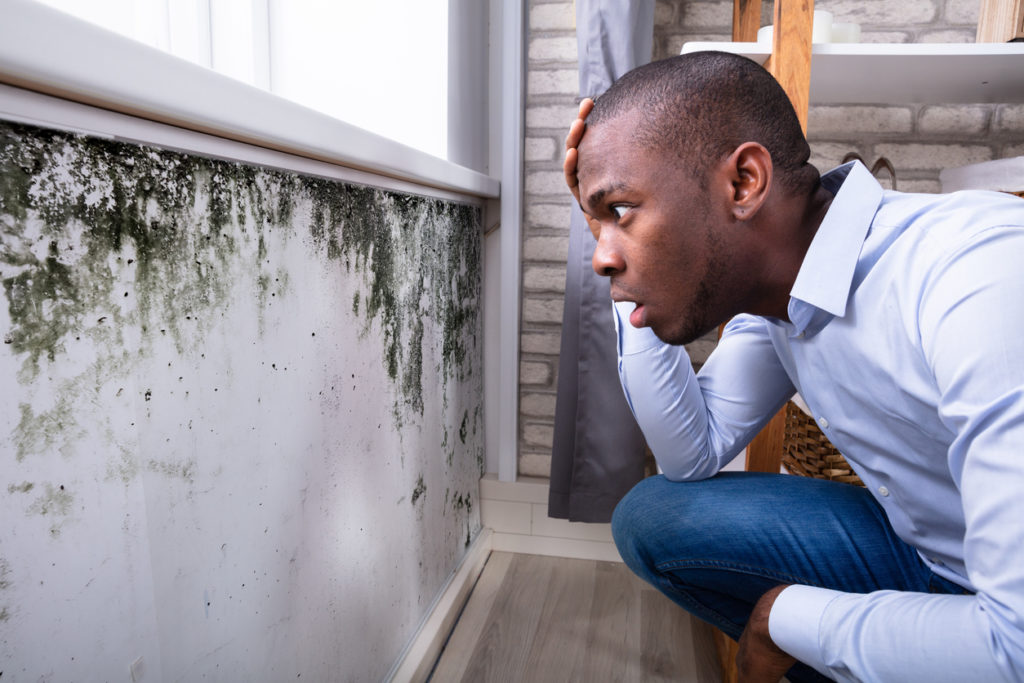Mold growth in homes is a common occurrence in Portland with our long, damp annual periods. Mold spores—the microscopic cells that reproduce and cause mold to spread—can be insidious, creeping in unseen, growing to become problematic by affecting a home’s structural integrity, creating health issues, and compounding health issues for those who already have them.
Because they produce irritants, toxins, and allergens, molds can affect humans in a number of ways. Results can be allergic reactions and asthma attacks. Some believe molds can also cause a variety of long-term illnesses.
To keep yourself and your family safe, knowing how to prevent and address mold in the structure of your home is an essential part of being a home owner in Portland.
There are steps you can take to remove mold growth from your home when you discover it, but prevention is key, as it will save you time and money in the long run.
Let’s first start with what causes mold and what you can do to prevent it from invading your home.
Causes of Mold Growth in Your Portland Home
Mold needs moisture to grow, and as we’ve said, living in a wet climate inherently introduces moisture into your home, both directly and indirectly. Some scenarios that lead to mold growth are:
- Leaky roofs—Small, inconspicuous roof leaks can wreak havoc on attic spaces.
- Leaky plumbing—Other out-of-the-way scenarios that can encourage mold growth in your home are areas with enclosed plumbing, like under sinks, in basements, and any other areas not used and seen on a regular basis, like pipes hidden away behind walls.
- Clogged gutters and downspouts—It’s no fun to get out and clear soggy leaves from gutters and downspouts, especially during our typical rainy season. But not routinely completing this task can lead to a build up that causes water to collect, back up, and even flood interior spaces.
- Use of hot water with no steam venting—Unvented steam from long, hot showers, from clothes dryers, and from other areas that use hot water on a regular basis will gather over long periods of time and cause mold growth.
- Condensation—The collection of moisture, in the form of condensation, occurs when the air indoors is warmer than the air outdoors and can gather on uninsulated walls and pipes, as well as single pane windows. Condensation or pooling water can also occur inside HVAC systems.
How to Prevent Mold Growth in Your Portland Home
Even the most diligent homeowner will likely experience mold growth in their home, especially as the years pass and moisture has more time to infiltrate the structure. That said, though, there are ways to prevent, or at least slow it down, by controlling the moisture in your home.
Clean and Disinfect
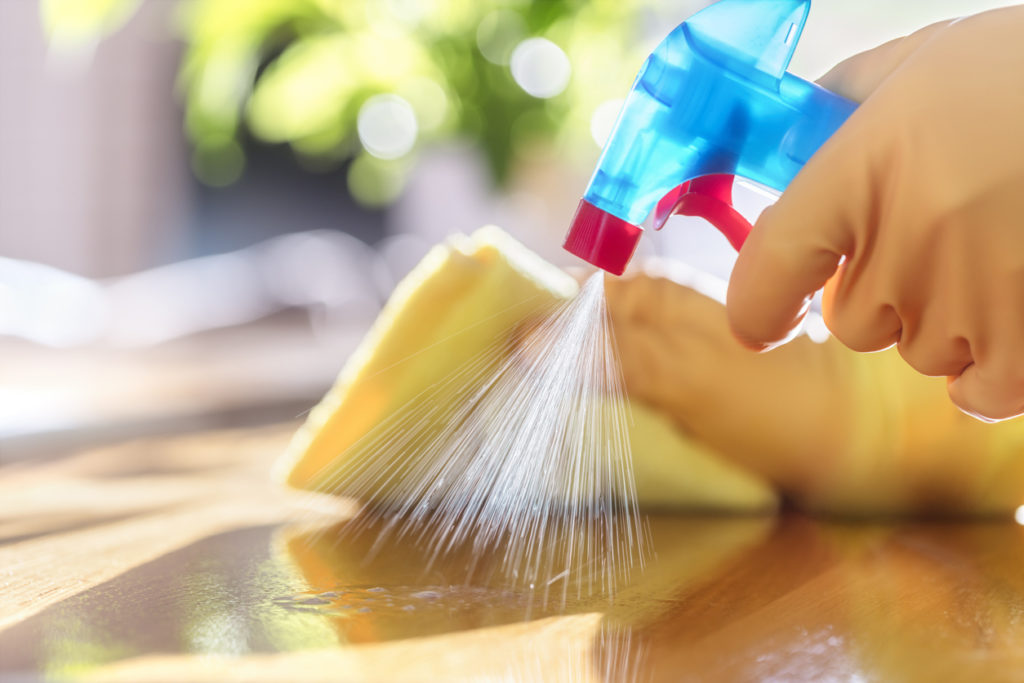
Areas where your home sees the most moisture—like the kitchen and bathrooms—are prime places for mold to move in and make itself at home. While stainless steel, porcelain, and various tiles aren’t porous enough for mold to take hold, the grouting around them is. Being conscientious about keeping these areas clean and disinfected will go a long way in preventing the invasion of mold in your home.
If you’re reluctant to use bleach and other chemical cleaners, you can always use the following household products for the same results.
- Rubbing alcohol—Make sure you use alcohol with 70% alcohol content. This alcohol-to-water ratio is best, as there’s enough water to allow the alcohol to flow into the smallest of porous openings to ensure that it gets deep into areas where mold can start.
- Hydrogen peroxide—Hydrogen peroxide mixed with water is another great solution for mold and mildew prevention. Using this 1:1 solution will work itself into deeper, unseen layers of porous materials and prevent mold and mildew growth.
- Vinegar—Another 1:1 solution that works wonders for disinfecting to prevent mold and mildew is vinegar and water. If the temporary odor of vinegar bothers you, you can always all a little fresh lemon juice to the mixture.
- Hot water—Pouring boiling water (140-160 degrees is sufficient) on areas susceptible to mold is another way to manage this culprit from invading your home. Of course, there’s the added danger of being burned in the process or leaving behind moisture that could, in the end, be the perfect breading ground for mold growth. Always wear protection and use caution when working with hot water.
Repair Plumbing Leaks and Water Seepage
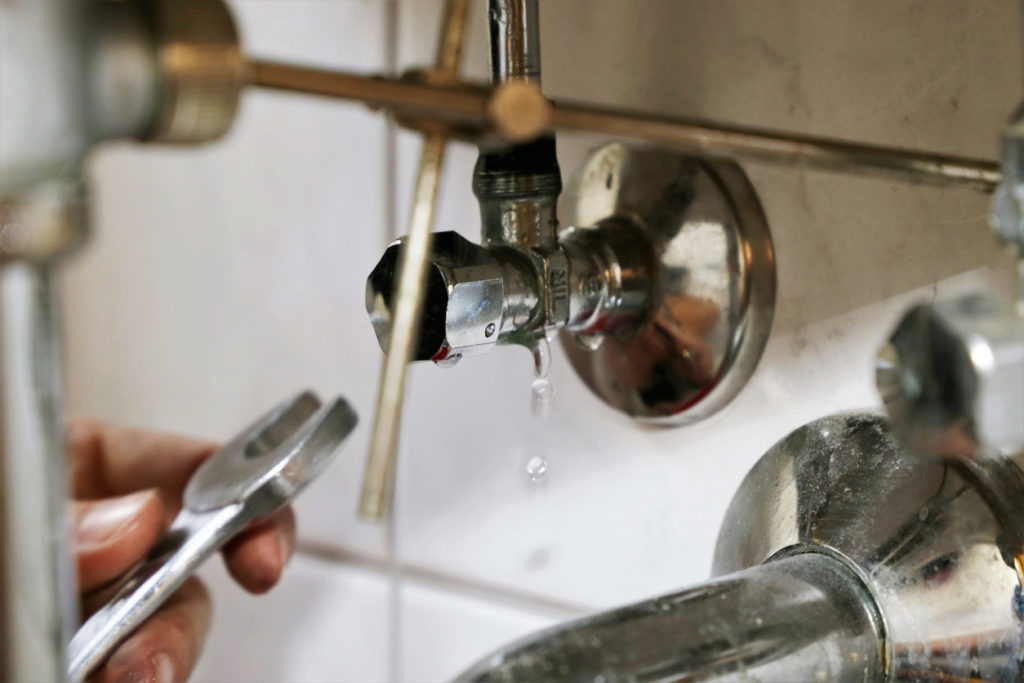
It’s a good idea to do regular check ins to rule out plumbing leaks and water seepage in your home. A quick look under bathroom, kitchen, and laundry sinks for pooling water or water stains will help you stay on top of potential problem areas in your home.
Other spots to routinely inspect are out-of-the-way places that don’t get a lot of traffic and attention, like basements; the floor around showers, tubs, and toilets; the area around and under clothes washers, dishwashers, and water heaters; and seldom-used closets.
Run Exhaust Fans
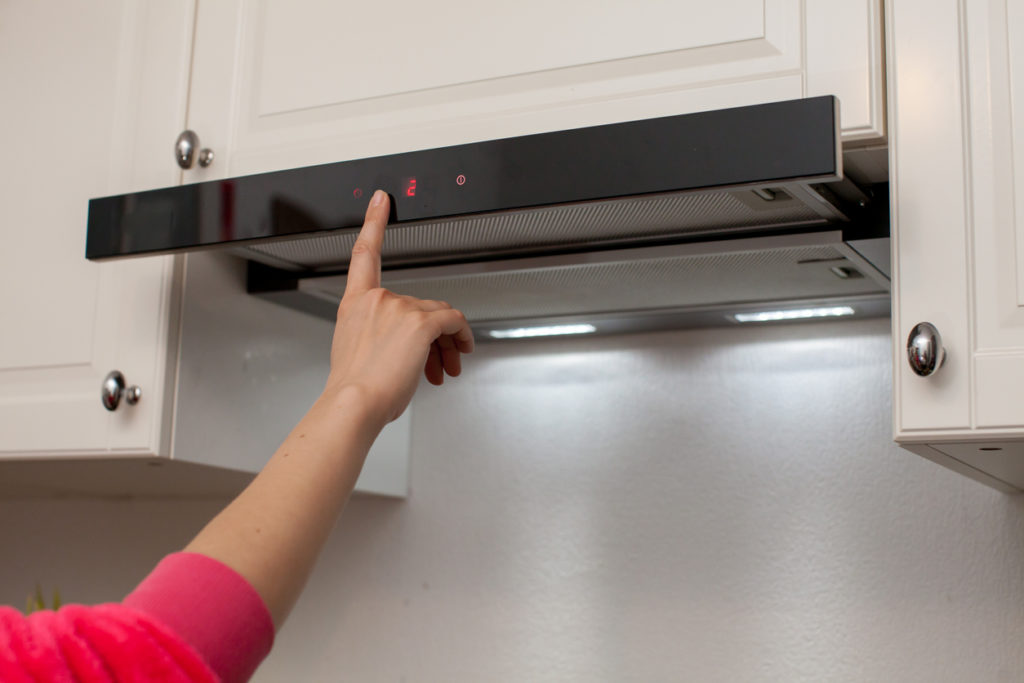
Running exhaust fans in bathrooms, kitchens, and laundry areas is key to significantly decreasing or eliminating moisture from interior areas of your home. In addition, while not in the main structure of your home, if you have outbuildings on your property, installing and running fans and vents can also be helpful in keeping these structures healthy in all ways. Learn more about using the proper ventilation in your Portland home.
Dry Out Wet Items Promptly
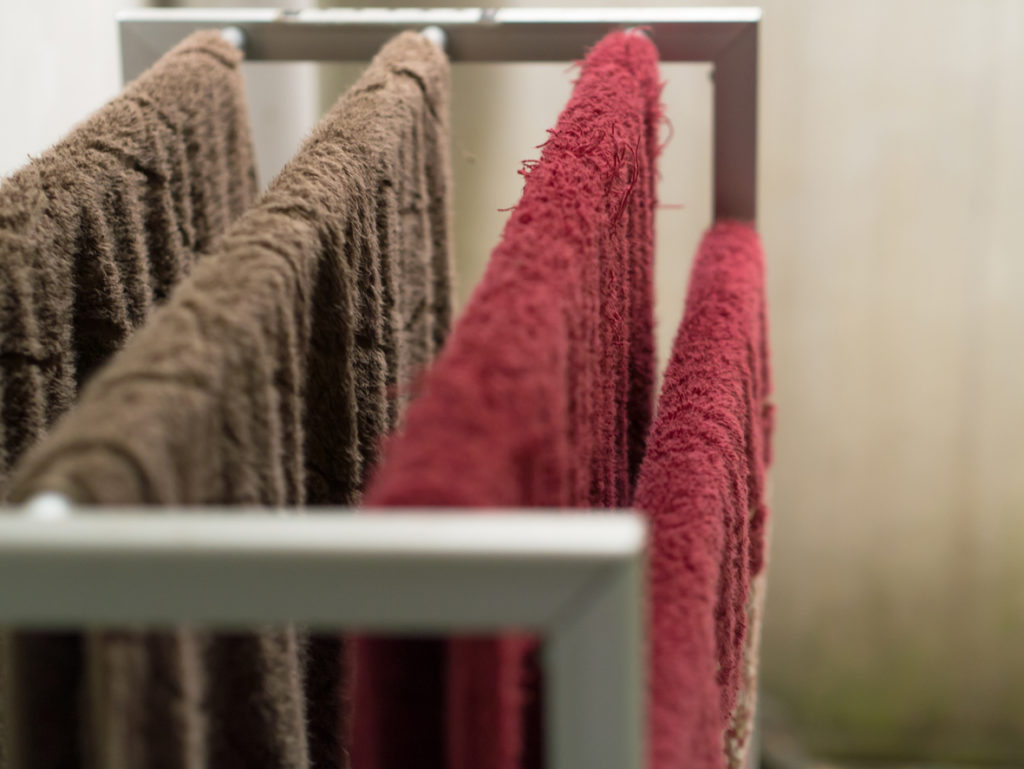
Long day at the beach or a fun afternoon at the pool, leaving you with a pile of wet towels and clothes? Prefer to air dry certain clothing items rather than tumble them in the dryer? Have a bath mat that’s left on the floor in between showers and baths? Any and all of these situations are prime areas for mildew and mold growth.
Simply hanging wet towels and clothing in the bathroom or laundry room with the exhaust fan going will also reduce the risk of excessive moisture in the air that can lead to mildew and mold growth.
Routinely Clean Your HVAC System and Ducts
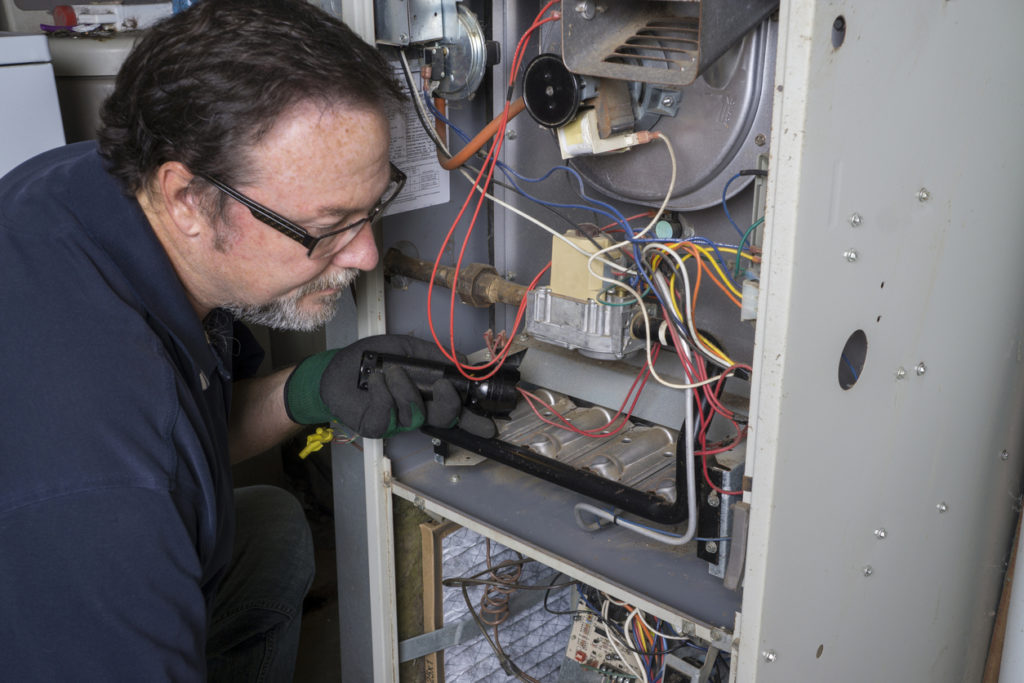
The last thing you want is for moldy air to be piped into your home for you, your family members, and pets to inhale. Cleaning your heating and air conditioning systems and ductwork routinely is a best practice to narrow the possibility of mildew and mold growth and keep you safe from mold health risks.
You can stay on top of this to some degree by replacing and cleaning filters for these system regularly. However, when it comes to thoroughly cleaning HVAC ductwork, it’s best to call in a professional.
Install Double-Pane Windows
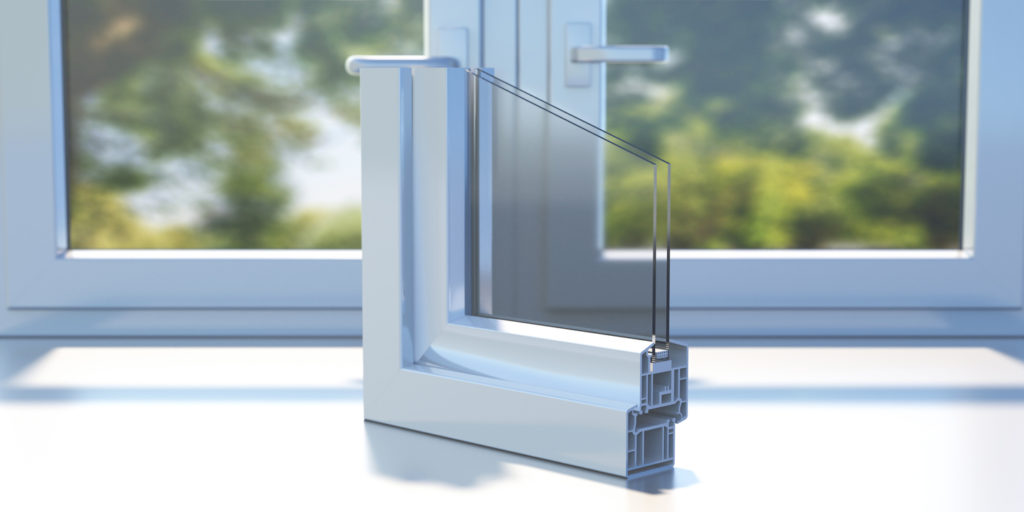
Simply put, two layers of glass are better than one. Not only does the layering of glass and the insulating gas found between the two panes decrease the level of noise pollution and dust that can enter your home, but the sealant put down to contain the gas stops the introduction of moisture into your home.
How to Detect Mold Growth in Your Portland Home
While prevention is key, sometimes the best attempts are not enough to control mold growth, especially in older homes. There is no magical method for detecting mold in your home beyond using your senses and knowing where to look.
- Visual—Do a regular visual inspection of your home. Check under sinks, in and around bathtubs and shower stalls, around kitchen sinks, grouting, baseboards throughout the home, behind furniture, behind the hanging clothes in your closet and in closets that don’t get regular use. Other areas are basements, including the walls, floors, stairs, door jams, and around equipment, vents, and items stored. And of course, include a full attic inspection to check for mold on a regular basis.
- Smell—A good indicator that you have some degree of mold grown in your home is when the air has a moldy or musty odor. This indicates that mold spores are in the air and need to be dealt with immediately.
- Hidden—As we’ve said, mold is insidious and stealthy. It can grow in spaces that are inaccessible and out of sight. For the average home owner, detecting hidden mold is not possible, so hiring outside help is necessary. Learn more about how to detect mold in your home.
How to Clean up Mold Growth in Your Portland Home
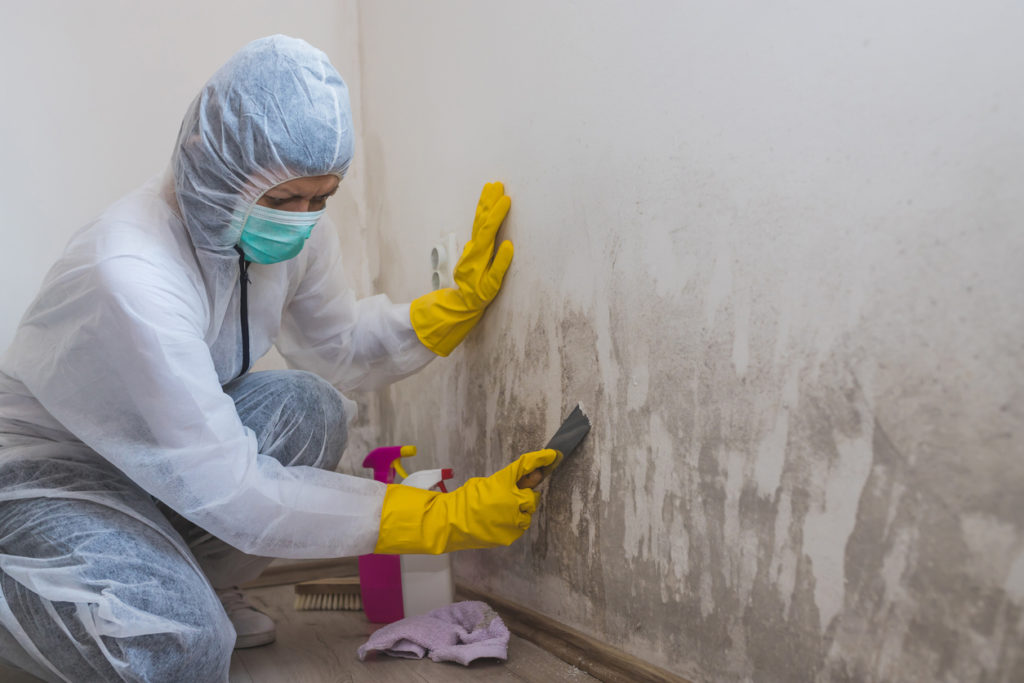
Discovering a mold growth problem in your home is never good news. But there are ways to clean it up to restore the health and safety of your home. Should you do this cleanup yourself or hire a professional?
According to the EPA, you can consider your mold growth cleanup a DIY project if the moldy area is approximately a 3×3 sq. ft. section. For any area larger than this, it’s best to call in a professional. Note though, that even when using professional services, it’s important that certain precautions be honored.
DIY Mold Growth Cleanup
Before you undertake a DIY mold growth cleanup project, make sure you’re aware of safety precautions and have the all the necessary Personal Protective Equipment (PPE).
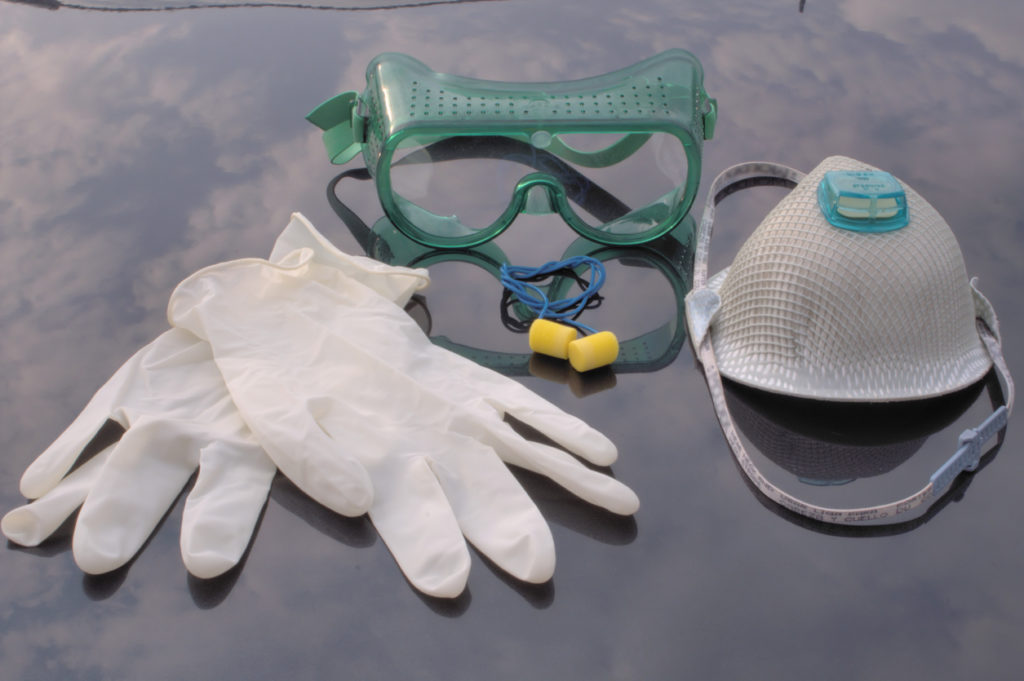
- Wear an N-95 mask—Mold spores are microscopic and can be easily inhaled, especially when disrupted.
- Wear rubber gloves—Coverage is important, so be sure to use gloves that extend up to the middle of the forearms.
- Wear goggles—To avoid the possibility of getting mold spores in your eyes, make sure your goggles do not have exhaust holes.
After you have gathered all necessary PPE, follow these steps.
- Repair water and plumbing leaks—Listed above as a preventative measure, repairing any existing water and plumbing leaks is also an essential first step in cleaning up mold growth.
- Scrub mold off hard surfaces
- Replace or discard affected items and surfaces—If an item or surface is too far gone to be cleaned sufficiently, it’s time to replace it or let it go. If an affected item or surface is expensive and you are unsure how to clean it, it’s best to call a professional.
- Avoid painting over mold growth—Fresh paint on a moldy service will peel. If you want to paint over a moldy surface, take the appropriate steps outlined above first. When the surface has dried completely, you can paint.
Professional Mold Growth Cleanup
If you’ve opted to hire a professional, make sure the professional has experience cleaning up mold growth, and don’t be afraid to ask for references.
After you’ve found a professional, clean up any excess water, repair leaks before the clean up, and remove items that might block easy access to the affected area. It’s recommended that you not be present in the home, or at least the area being cleaned up. If you’re not able to be away, wear the above-mentioned PPE.
Testing Mold Growth in Your Portland Home
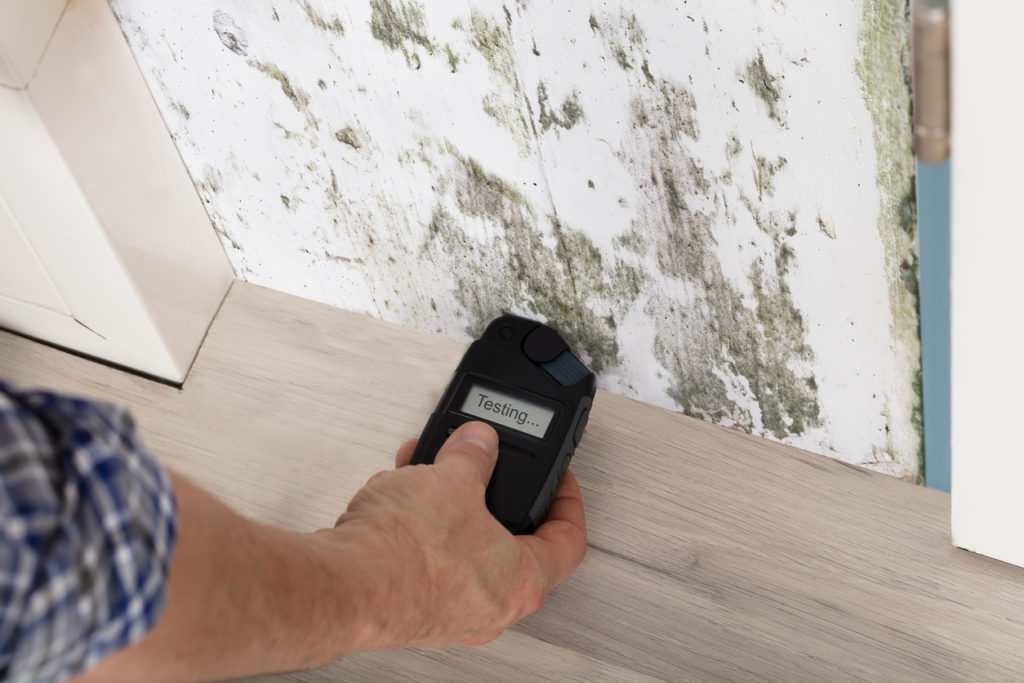
According to Oregon.gov, there are currently no standards for determining the degree of safety levels in mold that grows indoors. In other words, testing the mold in your home cannot tell you the degree to which is might be harmful to your health. The best rule of thumb if you can see mold or if the air in certain areas has a musty smell, treat it like a mold growth problem and take steps to clean it up.

